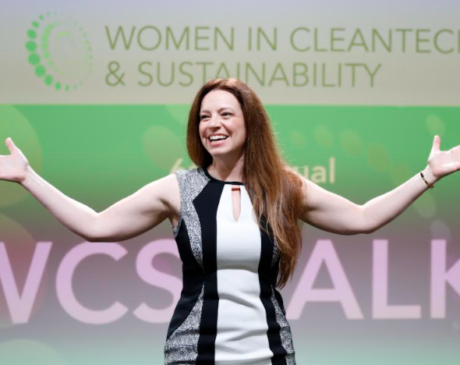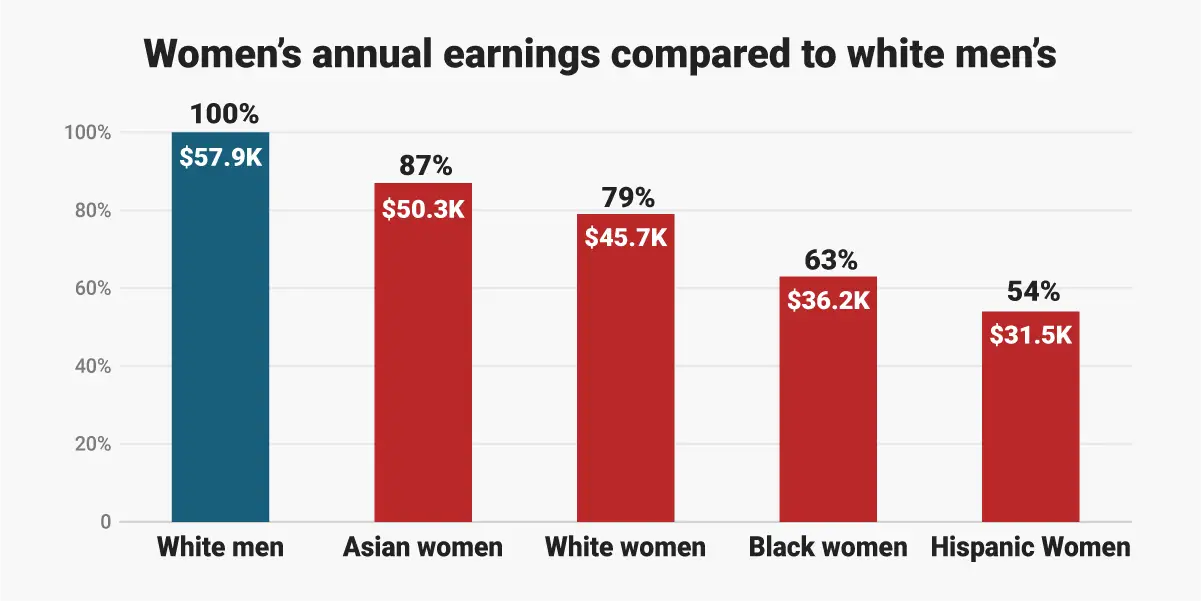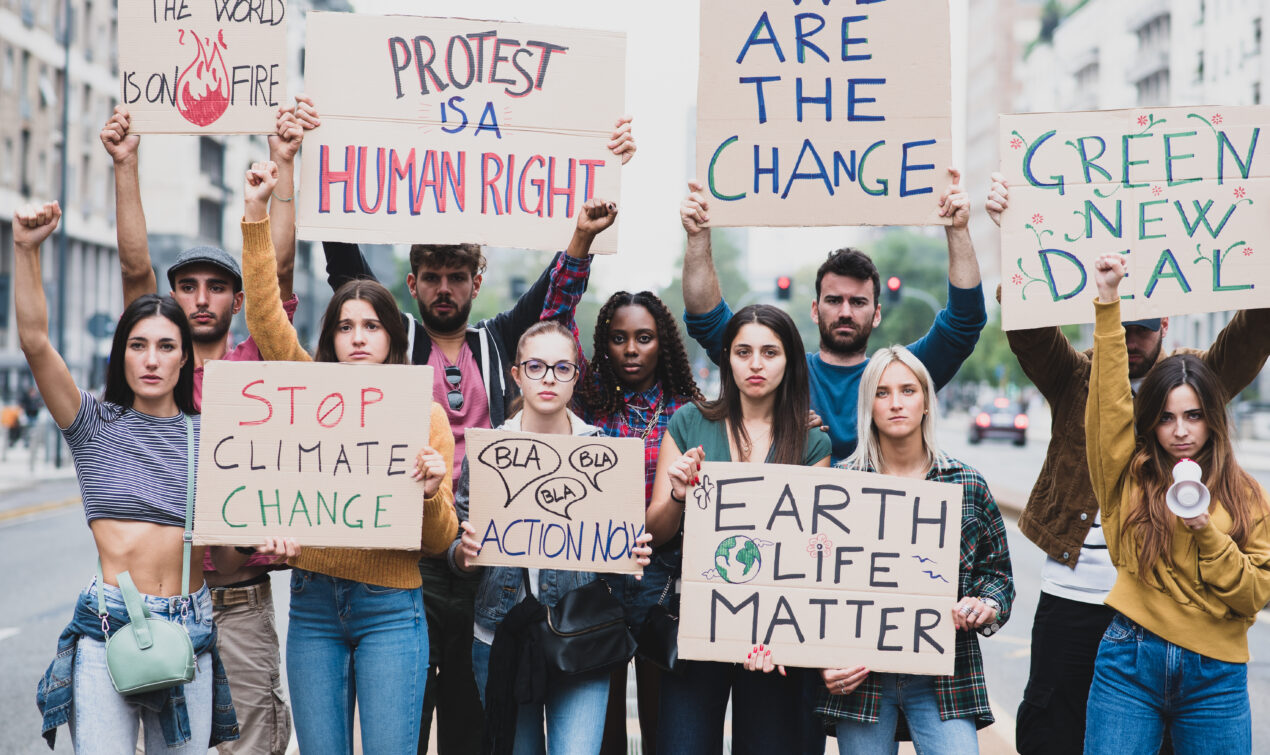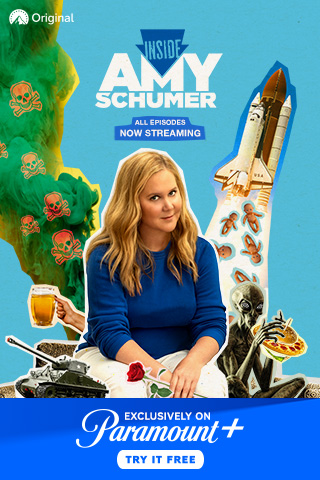Women in Clean Tech and Sustainability, Women for a Better Future
Lisa Ann Pinkerton founded Women in Cleantech and Sustainability in 2011. Since then, she has empowered women and promoted climate action in the Bay Area and beyond.
The time to act is now. As the world battles fires, floods, drought, famine and so much more, climate change’s intensity becomes even more clear. We have about ten years left before the planet warms above 1.5ºC and we reach irreversible tipping points. Thankfully, there are a number of remarkable women working within the cleantech industry to design both a green and innovative future. Lisa Ann Pinkerton is the Founder and Chairwoman of Women in Cleantech & Sustainability, a network of women making strides in the green economy in the Bay Area. We sat down with Lisa Ann to talk about her career and how Women in Cleantech & Sustainability helps the planet and amplifies the voices of women in a male-dominated field.

What inspired you to found Women in Cleantech & Sustainability? Tell us more about how you got here and your career now.
Early in my career, in 2001, I wanted to create a magazine that would be meaningful for people of my generation. I didn’t have the writing or journalism background experience necessary, so I ended up writing small, meaningless stories. However, the woman who I wrote for loved my articles, and I had the opportunity to write more stories. Then, I became an environmental science reporter for NPR.
When I was working as an environmental science reporter for NPR, I realized I was more in love with the companies that I was covering than writing the news itself. So, I transitioned to public relations in 2008 starting as a Senior Account Executive at Antenna Group. Having always enjoyed working for myself more than others, within a year, I was ready to break out on my own and found Technica Communications.
From my experience in working in the cleantech industry, I noticed there were always more men than women. Furthermore, when women were in this space, they were usually on the administrative side, and men always assumed that a female colleague present was an assistant or right out of college entry-level worker. There wasn’t much representation for women in higher-level positions in this space. So, I founded Women in Cleantech & Sustainability (WCS) in 2011, to create a Bay Area community to give women a sisterhood to thrive in and spotlight the remarkable women (and men) whose work is building our future green economy.
Why was it important for you to create this network? Tell us a bit about what Women in Cleantech & Sustainability does as a nonprofit and how it works with its network in the Bay Area.
When I first started in the cleantech industry, there was an extreme lack of gender, cultural, and racial diversity. This prompted me to create a place for women to speak their stories. Many have never had an opportunity to speak at that level. And in turn, this led to these voices speaking outside of WCS and alleviating “man-els” (all male panels) in the cleantech industry. Over time, it has evolved and all cleantech professionals (male or female) are invited to share their perspectives and challenge our assumptions.
As a 501(c)(6) nonprofit organization, WCS fosters an influential network of professionals to further the roles of women in growing the green economy and making a positive impact on the environment. Members range from students and entry-level professionals to Founders, C-Suite executives, and investors.
Women in Cleantech & Sustainability aims to meet once a month to network and learn the latest industry developments, as well as to attain new business and personal skills from speakers and panelists, known as WCS Talks. Topics covered include renewable energy (solar, wind, biofuel, etc), water, smart grid, biomass, carbon reduction, sustainable transportation, energy efficiency, sustainability, green buildings, and many other technologies that aim to make our world a cleaner and sustainable place. We have currently built a 4,500+ member international community with members in 31 states and eight countries.
We host a variety of events and programs for our members. In addition to our monthly networking meetups, educational events, and WCS Talks, we manage an industry-wide job board, organize internal volunteer opportunities, facilitate a mentorship program, provide scholarships, gather career development resources, and host an all-female pitch competition.
What were some of the biggest challenges you faced and what were the biggest catalysts for your success?
The biggest challenge I faced was getting out of my own way and letting others help me lead agency initiatives and projects. I have a Type A personality where I want to do everything myself and control all my work to ensure the best possible outcome. Overcoming this professional challenge has also been the greatest catalyst for my success. It went beyond delegating work to others, and I learned to trust others and their instincts in leading projects and initiatives. By creating and growing both Technica and WCS, I have learned to communicate my knowledge and thoughts to practice for others to follow and improve.
When I first started Technica, I did everything myself, from client outreach, event research, social media management, content creation, and other tasks necessary to run the organization. However, when the agency began to grow, and the workload increased, I knew I had to hire others to help create my vision and support clients. The same principle applies to WCS.
WCS grew because of all the proactive, passionate people involved. I was hesitant to start a mentorship program since I was unsure if I could find enough mentors on my own to jumpstart the program. With the help of the WCS committee, they were able to connect with highly skilled and knowledgeable executives to build an extensive mentor network. In addition, it was also the idea of the WCS committee to start a paid membership option to provide greater value and service to organization members. In a little over two years, WCS gained over five hundred paying members nationally and internationally.
Who are some of your role models?
Julien Adler. He is a business coach and leadership trainer who has been by my side as I’ve grown Technica. His advice is always spot on, no matter what I’m dealing with at the moment. When I complained I didn’t have any clients when I first founded the company, he asked me if I was going to networking events. When it was time to hire our first contractor, he helped me with the selection criteria. When I had my first “problem client” he walked me through how to handle it. When the company was comfortably successful, he helped me position it to grow bigger for a sale in the future. Beyond all of this, he’s helped me understand what my limiting beliefs and bad habits are to help me get out of my own way and thrive as a businesswoman and leader.
Early Oprah Winfrey: I admire Oprah’s lovely confidence and everything she created in her professional life. I particularly respect “early” Oprah and her television talk show’s power to spread joy and build a community.
What’s the most important thing you’ve learned? Has it translated to other aspects of your life? If so, how?
It takes time and effort to build relationships, and recognize and understand a conscious connection. Not everyone is a good fit; which was hard in the beginning. Especially since it takes some time to see if someone is a good fit. Just having to realize that it’s not personal and that new blood is good.
What advice would you give women looking to follow in your footsteps?
From my personal experience, I have observed that many women aren’t confident, and systems are built to label confident women as “bossy.” Everyone is a natural leader; some just haven’t figured it out. Leadership is not always hierarchical or competitive, despite what we typically see in workplaces and organizations around us. I encourage everyone to follow their intuition and find their passions. Then, find ways to step up and lead a project or initiative to harness those leadership skills.
Most of the time, people haven’t been “offered” a chance to lead, but there are generally many opportunities to highlight your competencies and build your confidence. Competence and confidence can be easily confused, but competence is knowing one’s skills and strengths and drawing attention to oneself in a way that feels authentic and comfortable.
Coming to these conclusions has helped me in my personal and professional life and can be credited as the fuel that helped me as a female entrepreneur. For anyone that wants to start their own company, I advise them to simply go for it and fully commit to their plan without a timeline. We have one chance to live life, so don’t focus on your failures. Focus on living, pursue your passion, and be proud of your wins.
What do you see as the greatest environmental issue of our time, and how does your work address this?
No environmental issue is more important than the other, as they should all be addressed and alleviated. However, I believe the biggest challenge for sustainability is the anxiety and fear people have for the earth’s future. My mantra has always been that the best medicine is action. You may feel like one person cannot make a difference because the problem is too big. But if each of us did something to try and mitigate the effects of climate change in one way or another, collectively we would be doing a lot.
Really, it’s a good idea to join a group like WCS. A lot of women come to our events because they get fulfillment, inspiration, and fellowship. We need organizations of people coming together to create such a groundhog activity that politicians and governments cannot ignore it.
In terms of climate change, we really only have ten years to make the necessary changes and reverse its disastrous effects. The current path that government and corporate organizations are following leads towards an above 2ºC environment, which is exceptionally harmful to everyone and everything on the planet.
The sense of urgency with climate change and the environment is certainly lacking, but I find it helpful to compare it to other global events that seemed overwhelming and daunting but were, ultimately, accomplished.
For example, during the 1970s and 80s, the Montreal Protocol on Substances that Deplete the Ozone Layer was adopted on September 16, 1987, to push governments to come together and reverse human-made damage and rebuild the ozone layer. Since the protocol came into effect, “around 99 percent of ozone-depleting substances have been phased out, and the protective layer above Earth is being replenished.”
Human resiliency and teamwork extend to many other significant events. For history buffs, when the Patriots took up arms against Great Britain during the American Revolutionary War, it was an extreme undertaking. Still, the American colonies gained independence from the British empire. In addition, many years later, when fighting on multiple fronts during World War II, the United States was able to fight and prevail over the Axis powers.
We even went to the moon and are now providing commercial trips to space, albeit expensive and exclusive. Nonetheless, I hope these examples help people realize and understand that climate change is manageable. If everyone takes action and works together, we can overcome it and rebuild a more sustainable future.
Where should people go if they want to connect with you?
I am active on LinkedIn.
Do you have any final thoughts you would like to add?
To quote Albert Einstein, “We cannot solve our problems with the same thinking we used when we created them,” and many of the social, political, economic issues we are currently confronting were established through the male perspective.
“As women, we have a different perspective and thinking pattern than men. Now is the time to use our influence, in any way we can, to bring about the positive change we would like to see in our world.”
— Lisa Ann Pinkerton founded Women in Cleantech and Sustainability
It imposes limits on what men and boys can and should do and what women and girls can and should do … Sexism in a society is most commonly applied against women and girls. It functions to maintain patriarchy, or male domination, through ideological and material practices of individuals, collectives, and institutions that oppress women and girls on the basis of sex or gender. Such oppression usually takes the forms of economic exploitation and social domination. Sexist behaviours, conditions, and attitudes perpetuate stereotypes of social (gender) roles based on one’s biological sex. A common form of socialization that is based in sexist concepts teaches particular narratives about traditional gender roles for males and females.”
In this context, we want to address sexism as it relates to those who identify as female. Since the dawn of time, women have been treated like second-class citizens with very few exceptions. Human history—in America and around the world—teaches us that the vision of power and strength is male and the female is sensual and nurturing. Women really saw that play itself out in the 1950s when advertisements would actually say things such as, “How to train your wife to serve you” … (Oh, we wish we were kidding), and being objectified and seeming pleasing to a man’s eye was the measure of our worth.

In fact, while yes the 1950s were the epitome of gorgeous fashion, it was also the era of severely oppressed women. Our jobs were to cook and clean, raise the children, and if we were to join the workforce, we were “intended” for sewing and secretarial positions. While again, there are exceptions, it was—and still is—rare that a woman is offered the job over a man regardless of qualifications and experience. The old mindset of a woman’s place hasn’t changed all that much in a man’s mind, which is unfortunate since, in our mind, a woman’s place is to rule the world!
Fast forward to the late 60s when women were burning bras as a signatory move that we were done being held down by the man—figuratively and literally. A movement in history that led to women in education, women running businesses and women no longer allowing any male figure or oppressive government ideal to hold us down. But that only went so far. As women started to become active participants in the job market, steadily contributing to the rise in the economy, the moment they became pregnant, the discrimination resurfaced.
The wage gap for many women of color is not only wider than the overall gender wage gap, but it is also closing more slowly.
AAUW Research & Data

When sexism in the workplace rears its head, you can be sure the experiences for working mothers, let alone pregnant ones are less than ideal. Baylor University, in association with American Psychological Association (APA), is conducting studies revealing that over the last decade, more than 50,000 pregnancy discrimination claims were filed in the United States (United States Equal Employment Opportunity Commission [U.S. EEOC], 2018a). There is limited research on the stress caused by the discrimination against pregnant mothers and their babies, so Baylor has launched a full scientific study to delve into precisely that. The study intends to explore the effects of pregnancy discrimination on the well-being and health of working women and their children.
“We draw on the occupational stress literature and medical research to propose that perceived pregnancy discrimination indirectly relates to mother and baby health via the mother’s perceived stress. In our first study, we examine the effects of perceived pregnancy discrimination on mothers’ postpartum depressive symptoms via perceived stress.
KEY LINKS
- Women in The Workplace Full Report, 2022
- The Gender Wage Gap
- Where The Gender Pay Gap Is Widest
Is the Difference in Work Hours the Real Reason for the Gender Wage Gap? [Interactive Infographic]
In our second study, we replicate and extend our first study and examine the effects of perceived pregnancy discrimination on mothers’ postpartum depressive symptoms and babies’ gestational age, Apgar scores, birth weight, and number of doctors’ visits, through the mechanism of perceived stress.
We find that perceived pregnancy discrimination indirectly relates to increased levels of postpartum depressive symptoms for the mothers, and lower birth weights, lower gestational ages, and increased number of doctors’ visits for the babies, via perceived stress of the mothers during pregnancy. Implications for theory and practice, limitations, and future research are discussed.”
So what do we do now that the pandemic has slowed our pace towards true equality? We put one foot in front of the other, we become angry enough to not be pushed back into the shadows of submission and we burn our damn bras.
We are here—and ladies? It’s not a temporary stay. This is the time of our ascension.
You ready?
Some Fascinating Statistics by AAUW, “Race and the Pay Gap”
While the gaps for white and Asian women compared to white, non-Hispanic men remain significant, they have narrowed much more over the past 30 years than the gaps for Black women and Latinas.
Since 1988:
- The Asian women’s earnings ratio changed from 69% to 87% – an 18% difference. The gap is projected to close in 22 years (in 2041).
- The white women’s earnings ratio changed from 64% to 79% – a 15% difference. The gap is projected to close in 50 years (in 2069).
- The Black women’s earnings ratio changed from 59% to only 63% – a 4% difference. At this rate, the gap will not close for 350 years (in 2369).
- The Latina earnings ratio changed from 53% to 55% – only a 2% difference. At this rate, the gap will not close for 432 years (in 2451).
Even as women of color earn bachelor’s and graduate degrees, their wage gaps compared to white, non-Hispanic men have remained the same or increased.
- Black women who graduated high school earned 65.99% of what similarly educated white, non-Hispanic men earned. When they completed a bachelor’s degree, that earnings ratio dropped to 65.14%.
- Latina women who graduated high school earned 66.78% of what white, non-Hispanic male high school graduates earned—a number that dropped to 62.73% upon graduating with their bachelor’s degree.
- Native American women who earned a high school diploma earned 66.7% of what their white, non-Hispanic male counterparts earned. That number fell to 59.2% for Native American women with a bachelor’s degree.
- White women do not face these same issues: their wage gap compared to white, non-Hispanic men decreases with increased education.
ABOUT LISA ANN PINKERTON
Lisa Ann Pinkerton is founder of Women In Cleantech & Sustainability, a San Francisco Bay Area group dedicated to the advancement of women in various environmental and technology sectors. She is also Founder and President of Technica Communications, where she handles marketing, social media, content production and public relations for cleantech and biotech startups. Additionally, Lisa Ann is Co-Founder and Marketing Chair for the Global Cleantech Cluster Association, an international speaker and moderator and documentary filmmaker. Lisa Ann is a former award-winning broadcast journalist who reported for National Public Radio, PBS Television, WPXI-NBC, American Public Media, and Free Speech TV.





